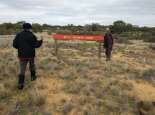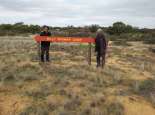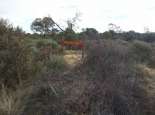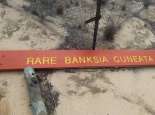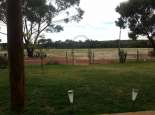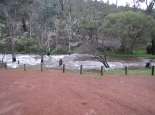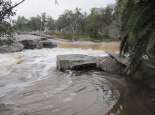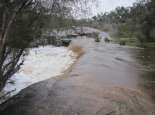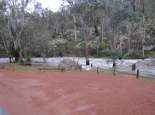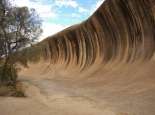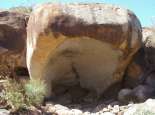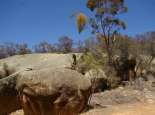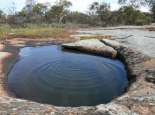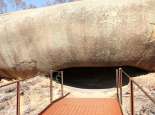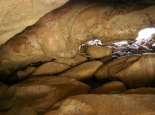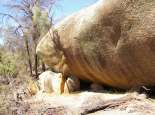About the Ballardong Region
keniny (dancing) ground and a little way from there would have been a camping place, there are gnamma holes – water holes and it was part also part of a Noongar trade route. Trade was a very important part of Noongar lifestyle. It was essential for maintaining the economical, cultural and social aspects of Noongar culture. The rock is a granite cliff, 15 metres high and 110 metres long. Its wave-like shape has been caused by weathering and water erosion made over 60,000,000 years ago, which has undercut the base and left a rounded overhang. Water running down the rock during the wetter months dissolved the minerals, adding to the coloring of the wave. In 1960, some crystals from Katter Kich were dated as being 2,700 million years old, amongst the oldest in Australia.
There is a gnamma hole that was used around this area (Quairading), it might be covered now because the white people did not believe in them. This happened to ngamma holes at a meeting place near Wave Rock… It is said that a lot of the Noongars from all over the place used to gather at Wave Rock. Noongars, Yamatjis, and Wongis as it was their meeting place. They would hold a lot of corroborees there.
Noongar Elder, Winnie McHenry, in Harben & Collard, ‘Recording Traditional Knowledge‘ 2005
Mulka’s Cave (Bates Cave)
Mulka was a mythological giant believed to have been 10ft tall. He was known as a moort worra (bad relation). The Noongar people believe Mulka lived in the cave when he fled after he broke cultural lore.
The Ballardong claim for Native Title was made in July 2000.
Ballardong Contact Details
Ballardong Regional Development Coordinator
South West Aboriginal Land and Sea Council 1490 Albany Highway Cannington WA 6107
(08) 9358 7400
reception1@noongar.org.au
